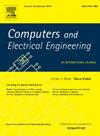Evaluation of grounding grid corrosion extent based on laser-induced breakdown spectroscopy (LIBS) combined with machine learning
IF 4
3区 计算机科学
Q1 COMPUTER SCIENCE, HARDWARE & ARCHITECTURE
引用次数: 0
Abstract
As one of the most widely used forms of energy, the safety and stability of power systems are crucial to modern society. Grounding grids dissipate current and reduce touch and pace voltage during lightning strikes or fault currents, ensuring the safety of personnel and equipment. However, prolonged submersion in soil causes inevitable corrosion, compromising grounding efficacy by increasing resistance and reducing current dissipation. This deterioration can result in unsafe local potential differences. This study uses Laser-Induced Breakdown Spectroscopy (LIBS) to measure corrosion degrees in grounding grids. Spectral data from samples with varying corrosion extent were collected, with outliers removed using the Local Outlier Factor (LOF) algorithm. Principal Component Analysis (PCA) reduced data dimensionality, revealing clustering in spectral data corresponding to corrosion extent. Three machine learning models were compared: Adaptive Boosting - Backpropagation Neural Network (Adaboost-BP), Support Vector Machine (SVM), and Random Forest (RF). The RF model showed the highest accuracy in predicting corrosion degree (R²=0.9845, MSE=0.0296), outperforming Adaboost-BP and SVM, especially for intermediate corrosion extent. These findings validate the effectiveness and reliability of combining LIBS with machine learning for predicting grounding grid corrosion, providing a theoretical foundation for the safe operation of power systems.
基于激光诱导击穿光谱 (LIBS) 并结合机器学习评估接地网腐蚀程度
作为使用最广泛的能源形式之一,电力系统的安全性和稳定性对现代社会至关重要。接地网可以消散电流,降低雷击或故障电流时的接触电压和节奏电压,确保人员和设备的安全。然而,长期浸泡在土壤中会造成不可避免的腐蚀,增加电阻和减少电流耗散,从而影响接地效果。这种腐蚀会导致不安全的局部电位差。本研究使用激光诱导击穿光谱(LIBS)测量接地网的腐蚀程度。研究人员收集了不同腐蚀程度样本的光谱数据,并使用局部离群因子 (LOF) 算法去除异常值。主成分分析 (PCA) 降低了数据维度,揭示了与腐蚀程度相对应的光谱数据聚类。对三种机器学习模型进行了比较:自适应提升-反向传播神经网络(Adaboost-BP)、支持向量机(SVM)和随机森林(RF)。RF 模型在预测腐蚀程度方面显示出最高的准确性(R²=0.9845,MSE=0.0296),优于 Adaboost-BP 和 SVM,尤其是在中等腐蚀程度方面。这些研究结果验证了将 LIBS 与机器学习相结合预测接地网腐蚀的有效性和可靠性,为电力系统的安全运行提供了理论基础。
本文章由计算机程序翻译,如有差异,请以英文原文为准。
求助全文
约1分钟内获得全文
求助全文
来源期刊

Computers & Electrical Engineering
工程技术-工程:电子与电气
CiteScore
9.20
自引率
7.00%
发文量
661
审稿时长
47 days
期刊介绍:
The impact of computers has nowhere been more revolutionary than in electrical engineering. The design, analysis, and operation of electrical and electronic systems are now dominated by computers, a transformation that has been motivated by the natural ease of interface between computers and electrical systems, and the promise of spectacular improvements in speed and efficiency.
Published since 1973, Computers & Electrical Engineering provides rapid publication of topical research into the integration of computer technology and computational techniques with electrical and electronic systems. The journal publishes papers featuring novel implementations of computers and computational techniques in areas like signal and image processing, high-performance computing, parallel processing, and communications. Special attention will be paid to papers describing innovative architectures, algorithms, and software tools.
 求助内容:
求助内容: 应助结果提醒方式:
应助结果提醒方式:


